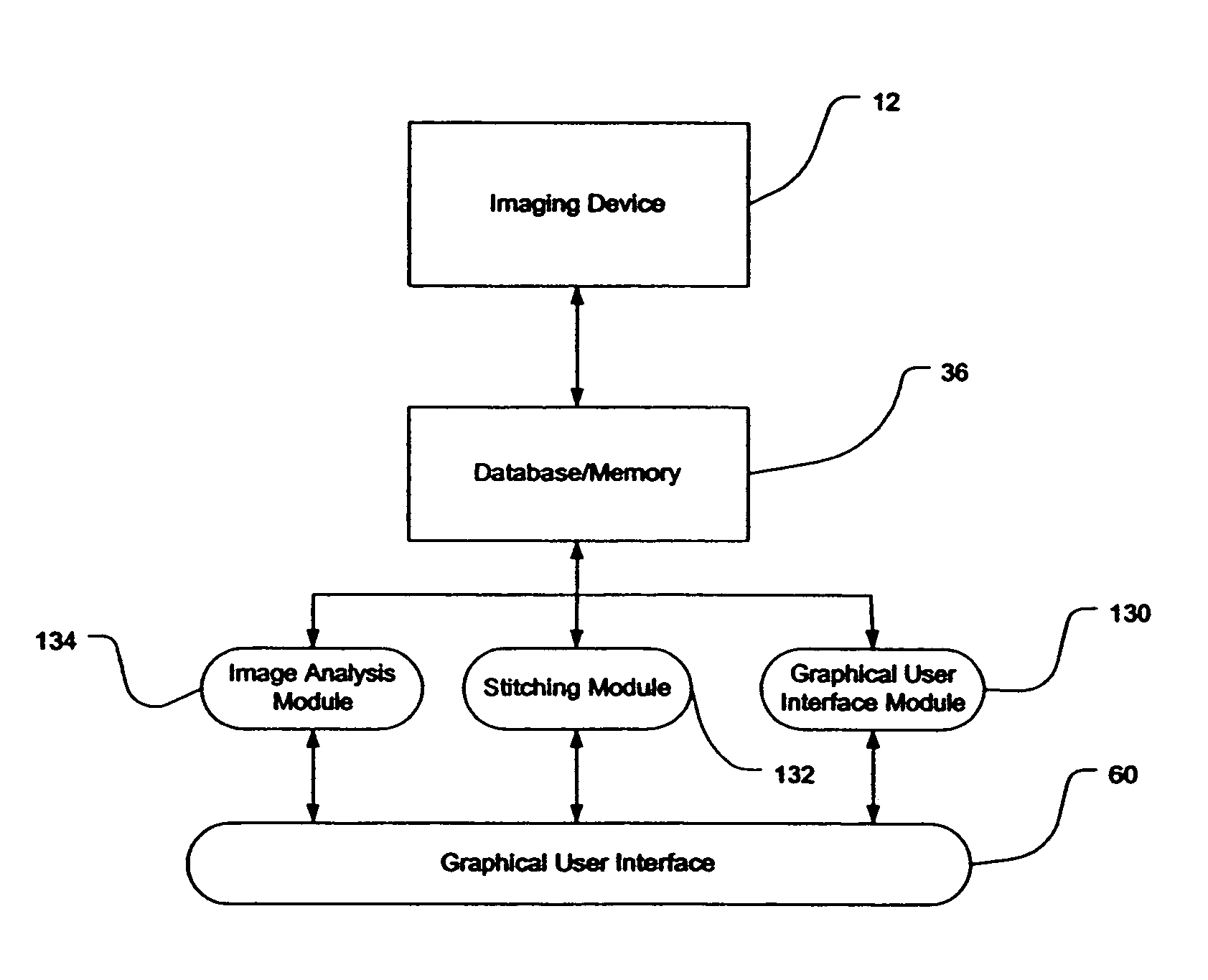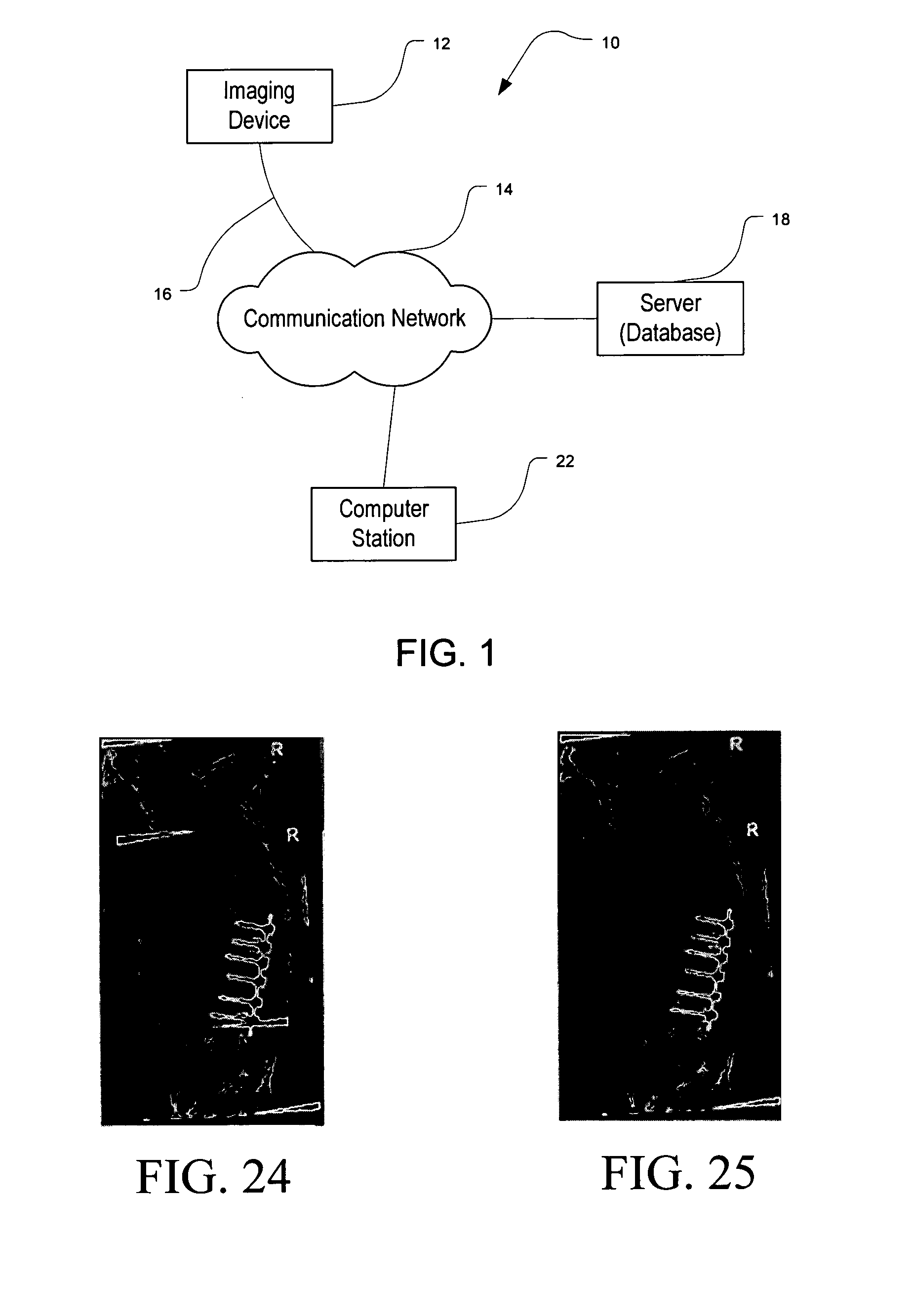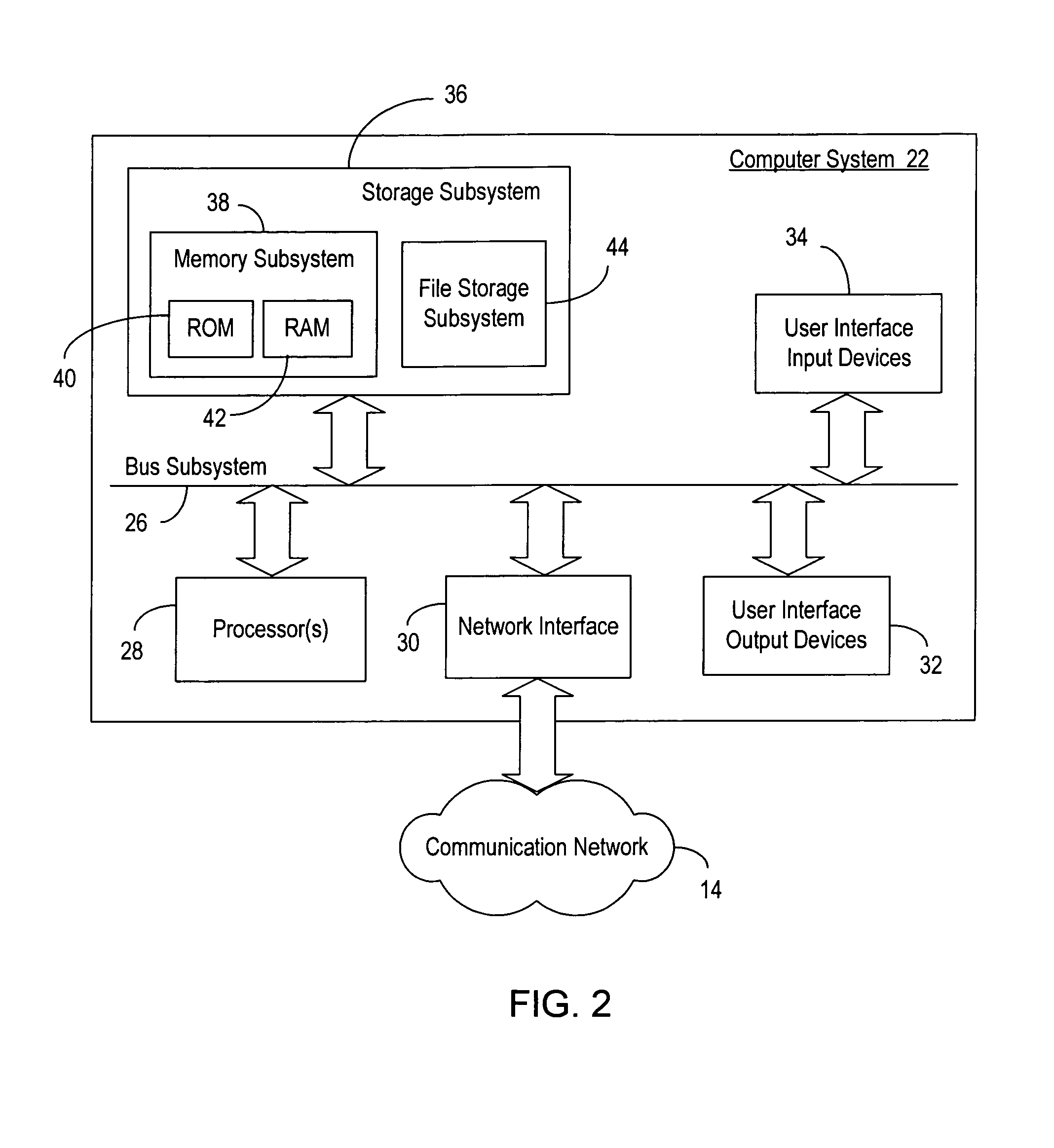Methods and systems for combining a plurality of radiographic images
a radiographic image and combining technology, applied in the field of medical imaging, can solve the problems of inconvenient stitching of images, inability to accurately stitch individual images, and inability to accurately mark two points, etc., to achieve easy identification, simplify marking two points, and accurate stitching images
- Summary
- Abstract
- Description
- Claims
- Application Information
AI Technical Summary
Benefits of technology
Problems solved by technology
Method used
Image
Examples
Embodiment Construction
[0061]The present invention provides improved methods, systems, software and graphical user interfaces for allowing a user to stitch and / or blend a plurality of DICOM digital radiographic images together.
[0062]FIG. 1 is a simplified block diagram of a system 10 which may incorporate the present invention. As shown, system 10 comprises an imaging device 12, such as an x-ray, MRI, CT, ultrasound, nuclear imaging device, or the like that is coupled to a communication network 14 (such as an intranet, LAN, WAN, or the internet) via communication link(s) 16. System 10 depicted in FIG. 1 includes a computer system 22 that communicates with the imaging device that can run software for manipulating images obtained from imaging device 16. It should be appreciated however, that system 10 depicted in FIG. 1 is merely illustrative of an embodiment incorporating the present invention and does not limit the scope of the present invention. For example, instead of delivering the image data to comput...
PUM
 Login to View More
Login to View More Abstract
Description
Claims
Application Information
 Login to View More
Login to View More - R&D
- Intellectual Property
- Life Sciences
- Materials
- Tech Scout
- Unparalleled Data Quality
- Higher Quality Content
- 60% Fewer Hallucinations
Browse by: Latest US Patents, China's latest patents, Technical Efficacy Thesaurus, Application Domain, Technology Topic, Popular Technical Reports.
© 2025 PatSnap. All rights reserved.Legal|Privacy policy|Modern Slavery Act Transparency Statement|Sitemap|About US| Contact US: help@patsnap.com



